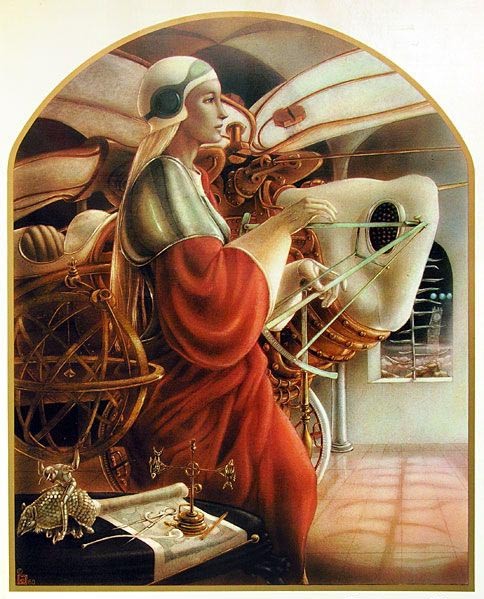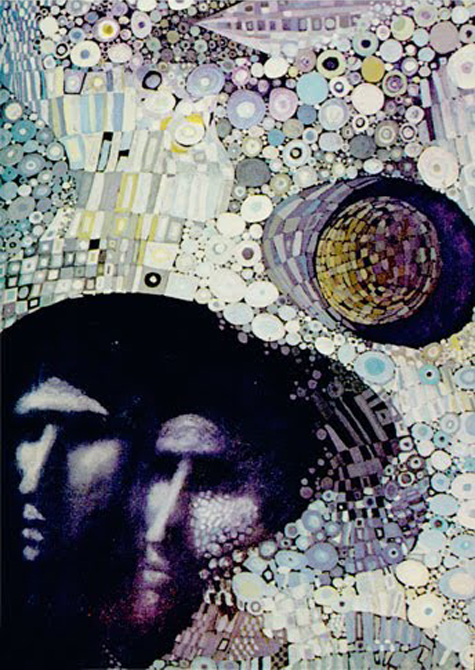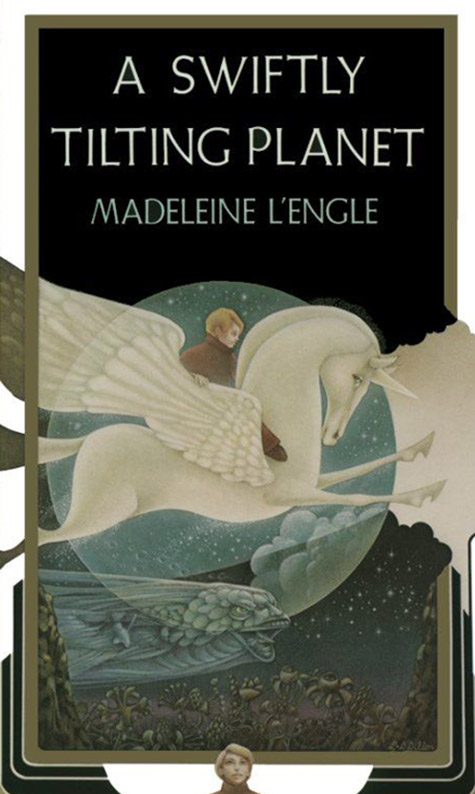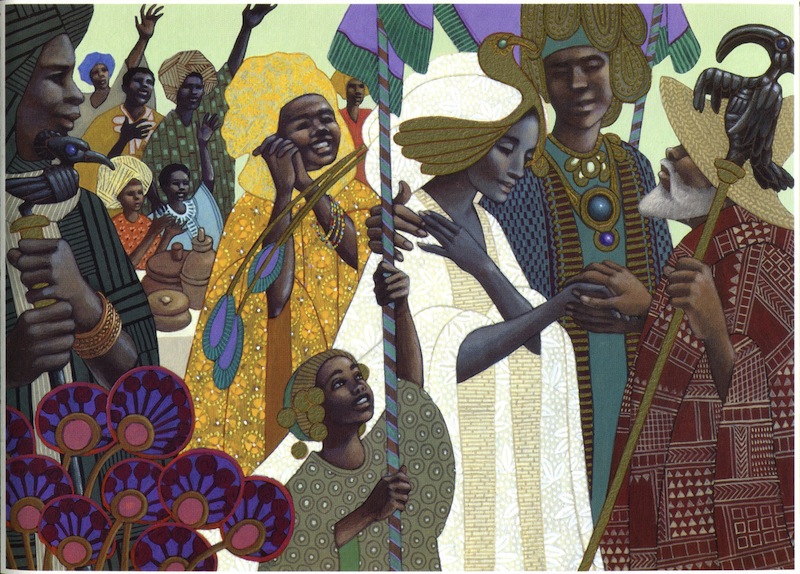“We’re like the mockingbird that can sing in many voices.”
—Diane Dillon
I have to admit that I’m a skeptic when it comes to the subject of fate. I roll my eyes at the idea of predestination and astral alignment; kismet, divine will, providence, whatever you want to call it, I simply don’t buy it. That is, with one exception:
The Dillons.
When it comes to Leo and Diane my skepticism falls by the wayside and I can’t help but believe their meeting, their marriage, and their career was somehow preordained and inevitable.
Born on opposite sides of the country (she in California, he in Brooklyn) eleven days apart in 1933, they met, competed, and fell in love while attending Parsons School of Design in New York. Married in 1957, Leo and Diane first pursued separate careers in illustration before realizing their strength was in collaboration; they fused their personalities and styles into a third entity that they came to refer to, almost as observers, as “the artist.” Almost from the beginning the Dillons sought out a broad spectrum of assignments and subject matter, approaching each job as an intellectual challenge and an opportunity to grow as artists. They employed whatever medium or technique that “worked”—including pastels, colored pencil, watercolor, acrylic, stencils, typography, woodcut, pochoir, found-object assemblage, collage, and sculpture—for a broad cross-section of clients.

Leo said in an interview with Step-By-Step Graphics magazine in 1997, “People always ask us why we do so many styles. We gave up our individual styles. Now the whole history of art—all the world’s styles—are our inspiration. Whenever we see a style that fits the subject, we use it, but we alter it to suit our needs. We don’t just imitate it. If someone says ‘I saw this cover and then I saw your name and I didn’t believe you had done it,’ that’s the best compliment we can receive. It’s not about ‘looking like a Dillon’—although, since it’s filtered through us, something does come through that makes out work recognizable to many.”
The Dillons produced book covers, editorial illustrations, movie posters, album covers, and advertising featuring subject matter that ranged from the sweetest children’s literature to the most volatile of political tracts (one of their covers was anonymously appropriated to become the symbol of the 1960’s Black Power movement).
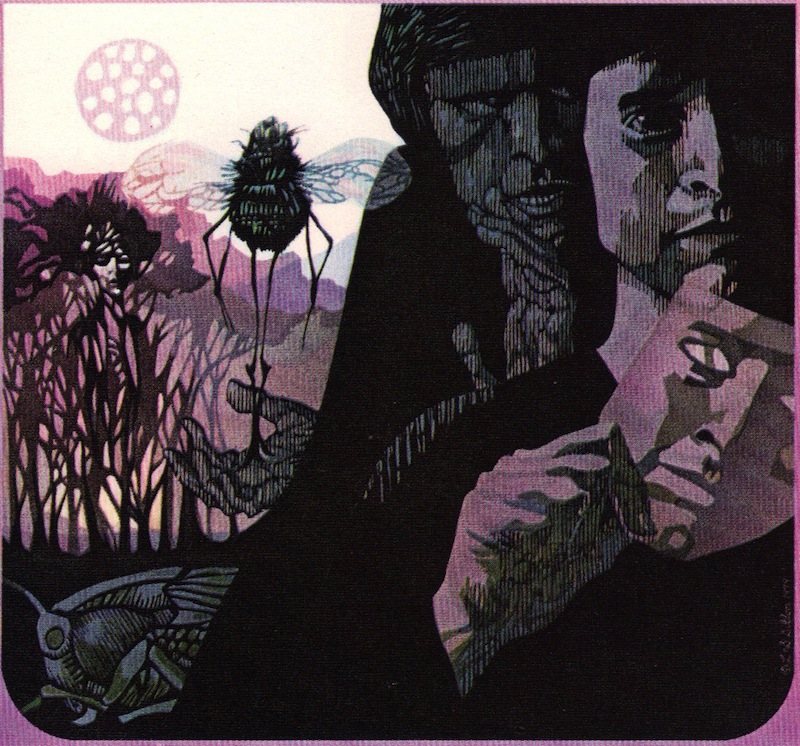
They became famous in the science fiction community for their inventive series of paperback covers for the Ace Science Fiction Specials as well as for their numerous magazine illustrations and book covers for the works of Harlan Ellison. Authors such as Ray Bradbury, Algis Budrys, Garth Nix, Joan Vinge, and Isaac Asimov all benefited from “the artist’s” unique vision. The Dillons were presented with the Hugo Award for Best Professional Artist in 1971—making Diane not only the first woman to receive the award, but also the only woman to subsequently be so honored for the following 43 years until Julie Dillon (no relation) won the Hugo in 2014. Ballantine Books produced a collection of their work, The Art of Leo and Diane Dillon, in 1981. Diane and Leo have been recognized with the Hamilton King Award, the Chesley Award, the World Fantasy Lifetime Achievement Award, the Spectrum Grand Master Award, and many, many others. They were inducted into the Society of Illustrators Hall of Fame in 1997.

But outside the world of fantasy and science fiction, the Dillons unquestionably became best known for their numerous picture books for children. Celebrated for illustrating stories featuring all ethnicities and cultural heritages, they received unprecedented back-to-back Caldecott Medals for Why Mosquitoes Buzz in People’s Ears and Ashanti to Zulu. Correta Scott King Awards and Honors followed for Aida, Her Stories, Rap A Tap Tap Here’s Bojangles—Think of That, and The People Could Fly. Their son Lee (a gifted artist in his own right) began collaborating with them in later years, providing intricate bronze frames that became part of the illustrations for Pish, Posh, Said Hieronymus Bosch and Twenty Thousand Leagues Under the Sea.

In the course of their careers the Dillons taught at the School of Visual Arts and lectured at colleges around the country. Diane is a past president of the Graphic Artists Guild and the couple were members of Spectrum’s Advisory Board.
Leo passed away from lung cancer in May of 2012. The New York Times jointly praised the Dillons in Leo’s obituary saying, “…one of the world’s pre-eminent illustrators for young people, producing artwork—praised for its vibrancy, ecumenicalism and sheer sumptuous beauty—that was a seamless amalgam of both their hands.” Leo’s and Diane’s last books together are The Goblin and the Empty Chair, and If Kids Ran the World.
The Museum of American Illustration at the Society of Illustrators is currently hosting a special memorial exhibition of originals in New York until December 20. That the show is special, is unique, is stunning, is magical…is not a surprise. How could it be otherwise? It’s the Dillons, after all. Such an exhibition was destined to be wonderful.
